All about crushed stone

Before starting any landscape work in a private house or in the country, you must carefully assess the possibilities of the site. Far from always, land plots have a flat surface, sometimes layers of fertile soil are severely damaged or absent altogether. That is why an obligatory part of the work in the improvement of the backyard territory is its filling with rubble.
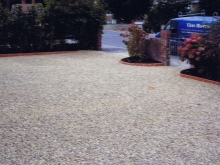
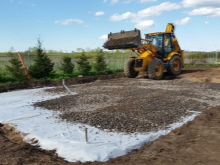
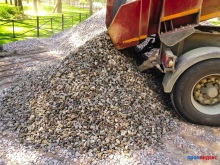
Peculiarities
Filling with crushed stone makes it possible to improve your territory simply, practically and inexpensively. It allows you to level the relief, protect the site from flooding, mask construction debris and create an effective drainage system.
With the help of filling, they equip paths in the garden, places for cars and entrances, and landscape designers everywhere use decorative filling for arranging the perimeter of gardens and flower beds.
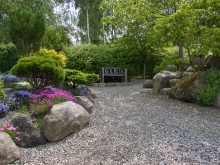
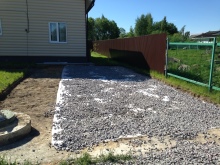
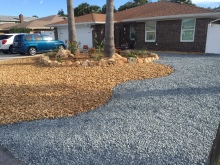
Filling with crushed stone has many advantages.
- Crushed stone is a high-strength material, so it can be used for filling parking lots, parking lots, passageways for heavy vehicles and other areas that face high operational loads.
- Crushed stone coatings are resistant to moisture, temperature fluctuations and other unfavorable external factors.
- You can fill the site with crushed stone with your own hands, without having any construction skills.
- Manufacturers offer a wide selection of crushed stone at a variety of prices, so everyone can always find an acceptable option for themselves.
- Crushed stone has the property of allowing water to pass through, due to which it is often used in swampy areas. Of course, it is not enough as a permanent full-fledged drainage, but backfilling will avoid constant puddles.
- Crushed stone has a decorative appearance, therefore it is widely used in landscape design.
- The site, made of rubble, needs almost no maintenance.
- Crushed stone is of natural origin, so its use near residential buildings does not pose a threat to the health of people living in them.


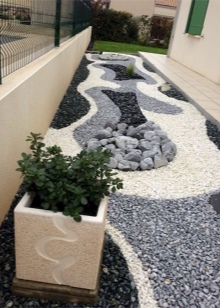
However, there were some drawbacks:
- the coating is formed uneven and hard, it can be inconvenient to walk on it;
- the use of large stones with sharp edges for dumping leads to damage to tires in the parking lot;
- crushed stone is not the most suitable material for arranging playgrounds due to the increased risk of injury.
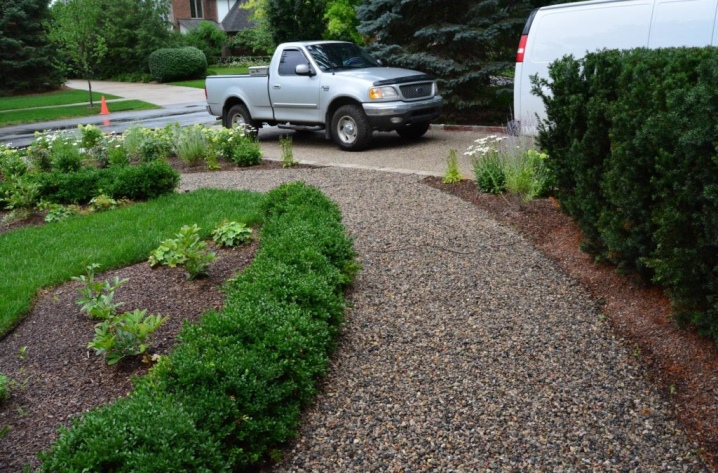
Crushed stone selection
When choosing crushed stone, it is necessary to take into account its following characteristics.
- Fraction. Usually, medium and small crushed stone is used for backfill. It is convenient to move on such a surface, it does not damage the tires of cars. If the land is swampy, it will be correct to make a two-layer coating - lay out stones of a coarse fraction from below, and sprinkle with fine gravel on top.
- Strength. If backfilling is performed on construction sites or car parks, it will be subject to high loads. In this case, it is better to give preference to materials of magmatic origin with a crushing grade of M800 and more.
- Flakiness. This indicator reflects the presence of flat and needle-shaped grains. If it is important for you that all moisture from the surface of the dump leaves as quickly as possible, it is better to give preference to crushed stone with increased flakiness parameters. At the same time, it must be remembered that a significant number of irregularly shaped grains leads to deformation of the roadway, therefore, it is advisable to take fractions with average parameters for parking lots.
- Persistence. In the Russian climate, any road surface is exposed to low temperatures. In order for the backfill to serve as long as possible, you need to fill in the material marked F50 - such a stone can withstand up to 50 freezing and thawing cycles, so the coating will last 10-20 years.
- Abrasion. This criterion shows the resistance of crushed stone to pressure. For backfilling parks and courtyards, the choice should be made in favor of materials with a reduced tendency to abrasion. When arranging a garden plot, this characteristic is not of fundamental importance.
- Water absorption. Crushed stone should allow moisture to pass through, but not absorb it. If water gets into the cracks, then in winter it will freeze and expand - this will destroy the material from the inside and negatively affect the operational life of the backfill. Granite and gabbro have the lowest water absorption, serpentinite has good indicators.
- Radioactivity. Usually, the backfilling of yard areas is carried out near residential buildings, so the gravel must be safe. This means that the stone radioactivity parameter will be within 370 Bq / kg.
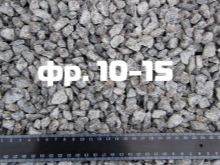
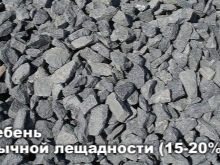

A summer cottage, an adjoining territory or a parking place should be not only functional, but also aesthetic and neat. It is important that the shape of individual grains and their color scheme correspond to the general stylistic solution of the landscape. According to this criterion, the following varieties are distinguished.
- Granite crushed stone - gives a beautiful and durable coating, and the inclusions of quartz in the rock effectively shimmer in the sun.
- Gabbro - creates an area with a light gray hue, which will change in the rain.
- Diorite - used when creating areas of a dark shade. In addition, the material is resistant to cold, wear, and has exceptional strength.
- Coil - Serpentinite crushed stone of dark green or olive color, the shade of which changes when moistened.
- Marble crushed stone - this material has a light yellow or white color, as well as a flat surface.
- Limestone crushed stone - the color of such material varies from snow-white to brown. At the same time, it stains well, therefore it is widely in demand in garden design.
- Amphibolite crushed stone - such a stone does not represent any decorative value. It is used exclusively in cases where the emphasis is not on aesthetics, but on the durability and strength of the material.
- Quartz - the most beautiful type of crushed stone, but also the most expensive.
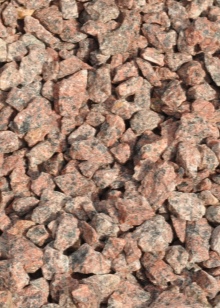
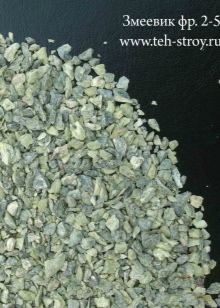

Technology
Backfilling of the territory includes several main stages of work. Raising the groundwater level above the depth of soil freezing. This protects the foundation of the building from precipitation, neutralizes all problems associated with soil heaving and gives the foundation maximum stability. In the event that the slope is 7 percent or more, raising the level must be complemented by terracing.
When creating a dump on artificially crushed areas in the event of large fluctuations in heights, it is imperative to provide a drainage system. Even on the smallest slopes, drains should be installed that will remove water outside the site.
Before starting work, the top fertile layer is removed so that the grass does not grow.
Direct filling is performed manually using a shovel (if the size of the site is small) or with special equipment (in large areas).

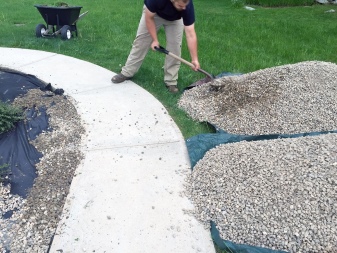
If sprinkling is performed in the place where subsequent landscaping is planned, then after the completion of leveling, the black soil is returned back to its place. When arranging a construction site, there is no point in returning fertile lands back.
Useful Tips
There are situations when the use of gravel is the only way to improve the site. These include cases when:
- the land plot is located in a lowland - this is especially important with an increased level of groundwater occurrence, as well as during the rainy season and melting snow, when the site is constantly heated;
- there are heights and depressions on the site that prevent it from being fully landscaped;
- part of the local area is swampy and does not dry out even in the heat;
- main country road above the plot level;
- if the soil on the territory is heavily littered with used building materials and household waste.
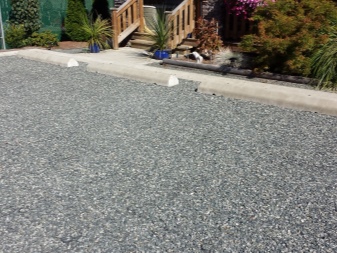

In all other situations, other types of backfill can be used - sand, gravel or bark.
For information on how to fill the site with rubble, see the next video.













The comment was sent successfully.